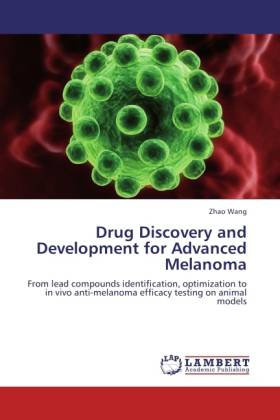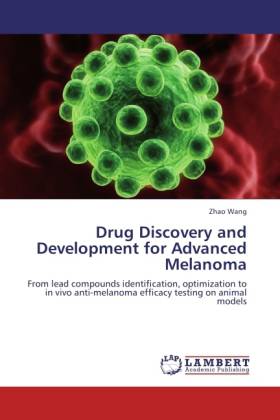
- Afhalen na 1 uur in een winkel met voorraad
- Gratis thuislevering in België vanaf € 30
- Ruim aanbod met 7 miljoen producten
- Afhalen na 1 uur in een winkel met voorraad
- Gratis thuislevering in België vanaf € 30
- Ruim aanbod met 7 miljoen producten
Zoeken
Drug Discovery and Development for Advanced Melanoma
From lead compounds identification, optimization to in vivo anti-melanoma efficacy testing on animal models
Zhao Wang
Paperback | Engels
€ 67,45
+ 134 punten
Omschrijving
Malignant melanoma is the most dangerous type of skin cancer. It accounts for about 75% of skin cancer deaths. Patients with advanced melanoma with dissemination to distant sites and visceral organs have a very poor prognosis, with a median survival time of 6 months and a 5-year survival rate of less than 5%. Over the past 40 years, no one drug or combination of drugs demonstrated any improvement on survival of metastatic melanoma patient. In the year 2011, FDA approved ipilimumab and Vemurafenib for the treatment of advanced melanoma. But both drugs only prolonged patients' life of 2-3 months. So the war to fight advanced melanoma is far from ending. In this book, the author and colleagues used classical approaches discovering and developing novel therapeutic agents for advanced melanoma. They identified several new classes of compounds which showed very potent in vitro activity against metastatic melanoma cells and in vivo activity on several animal models. They further optimized the lead compounds activity through a knowledge-based molecule design. They also identified the cellular target of these compounds and elucidated their mechanism of action in killing melanoma cells.
Specificaties
Betrokkenen
- Auteur(s):
- Uitgeverij:
Inhoud
- Aantal bladzijden:
- 188
- Taal:
- Engels
Eigenschappen
- Productcode (EAN):
- 9783846520703
- Verschijningsdatum:
- 7/10/2011
- Uitvoering:
- Paperback
- Formaat:
- Trade paperback (VS)
- Afmetingen:
- 152 mm x 229 mm
- Gewicht:
- 281 g

Alleen bij Standaard Boekhandel
+ 134 punten op je klantenkaart van Standaard Boekhandel
Beoordelingen
We publiceren alleen reviews die voldoen aan de voorwaarden voor reviews. Bekijk onze voorwaarden voor reviews.











